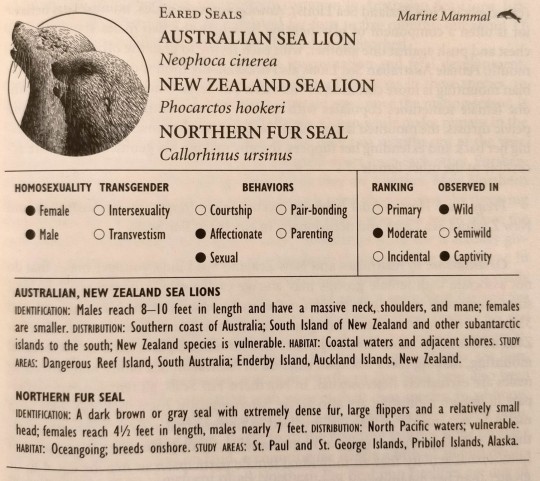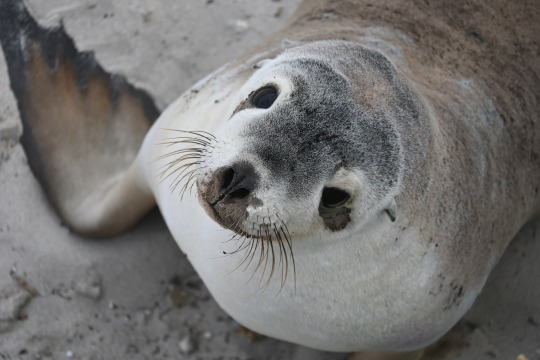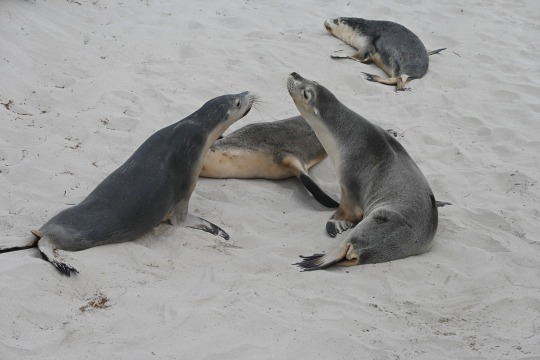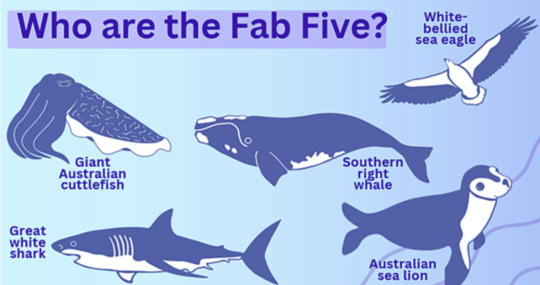#neophoca
Explore tagged Tumblr posts
Text
During the breeding season, females of each of these species aggregate into groups among which a smaller number of males are distributed.

"Biological Exuberance: Animal Homosexuality and Natural Diversity" - Bruce Bagemihl
#book quotes#biological exuberance#bruce bagemihl#nonfiction#australian sea lion#neophoca cinerea#new zealand sea lion#phocarctos hookeri#northern fur seal#callorhinus ursinus#breeding season
0 notes
Text
In all three of these eared seals, significant proportions of the population do not breed.
"Biological Exuberance: Animal Homosexuality and Natural Diversity" - Bruce Bagemihl
#book quote#biological exuberance#bruce bagemihl#nonfiction#eared seal#australian sea lion#neophoca cinerea#new zealand sea lion#phocarctos hookeri#northern fur seal#callorhinus ursinus#nonbreeding
0 notes
Text
In New Zealand Sea Lions, adult breeding males also sometimes participate in homosexual mounting, making them bisexual, whereas in Australian Sea Lions, adult breeding males are exclusively heterosexual.
"Biological Exuberance: Animal Homosexuality and Natural Diversity" - Bruce Bagemihl
#book quote#biological exuberance#bruce bagemihl#nonfiction#new zealand sea lion#phocarctos hookeri#homosexual#bisexual#australian sea lion#neophoca cinerea#heterosexual
1 note
·
View note
Note
Australian sea lions (Neophoca cinerea)?

buluru
a small predatory whale (11 ft long). they live and hunt in the ocean's sunlight zone, eating fish, seabirds, cephalopods, small sharks, and often hunt as a pack to catch larger or quicker prey like dolphins or seals. because of competition with orcas, they live along the east coast of Orus Hycea rather than the south
73 notes
·
View notes
Text



Australian sea lion - neophoca cinerea
📍Australia
🌡️Endangered
12 notes
·
View notes
Text



Australian Sea Lion (Neophoca cinerea) - Seal Bay Conservation Park, SA, December 2021
#south australia#kangaroo island#australian wildlife#wildlife#mammal#pinniped#sea lion#mammalwatching#wildlife photography#my stuff
31 notes
·
View notes
Text
I had a wonderful time watching this young Australian sea lion (Neophoca cinerea) carefully inspecting every stone, stick, and shell on the beach! It was a beautiful display of innocence and wonder. Kids will be kids 😍.
📸 Canon R5 & Canon RF100-500mm F4.5-7.1 L IS USM
📍Seal Bay, Kangaroo Island, South Australia

#travel#nature#trip#wildlife#wildlifephotography#australia#southaustralia#kangarooisland#sealbay#sea lion#canon
8 notes
·
View notes
Text

Excerpt from this story from The Revelator:
How do you get people to care about something they can’t see?
That has always presented a challenge in environmental conservation messaging, where a consumer’s decisions can affect people or species on the other side of the planet. It can be hard to connect the dots between a candy bar containing palm oil sold in Indiana to the destruction of an orangutan’s habitat in Indonesia, or how purchasing a cheeseburger in Nebraska contributes to deforestation of the Amazon.
While advocates have had some notable successes communicating these threats, promoting similar efforts to protect ocean life has proven even harder — even for communities that live right next to those waters.
Two of the biggest threats to marine biodiversity come from unsustainable overfishing and habitat loss — both of which also threaten the food security and livelihoods of coastal communities.
To fight these threats, governments have increasingly turned to creating marine protected areas (MPAs), essentially underwater national parks that protect habitats and organisms that live within them.
What can we do to build local support for MPAs and enhance their success? Wootton and her colleagues tried using an innovative collection of virtual and visual tools to persuade people of the benefits of an MPA. It focused on beloved marine species that would be protected by an MPA network, which the researchers called the “Fab Five.”
Wootton and a team of marine scientists, in partnership with First Nations Sea Country peoples, wanted to assess what gets community members to care about the ocean and support an MPA. Working in South Australia, which has 26 commonwealth or state marine parks, they picked five iconic local species who benefit from the MPA, including the Australian sea lion (Neophoca cinerea), giant Australian cuttlefish (Sepia apama), white-bellied sea eagle (Haliaeetus leucogaster), great white shark (Carcharodon carcharias), and southern right whale (Eubalaena australis).
9 notes
·
View notes
Text
Australian sea lion pups (Neophoca cinerea)
Meerkat (Suricata suricatta)

39K notes
·
View notes
Photo

Australian sea lion (Neophoca cinerea)
Photo by Julien NKS
#fave#australian sea lion#neophoca cinerea#neophoca#otariinae#otariidae#otarioidea#pinnipedia#pinnipedimorpha#arctoidea#caniformia#carnivora#carnivoramorpha#ferus#scrotifera#laurasiatheria#boreoeutheria#eutheria#mammalia#tetrapoda#vertebrata#chordata
115 notes
·
View notes
Photo




Kangaroo Island: pioneering research examines health of sea lions – in pictures | The Guardian
For the first time, a colony of sea lions in Australia is being treated with a topical anti-parasitic and monitored for health and survival. The research, led by Dr Rachael Gray, from the School of Veterinary Science at the University of Sydney, is investigating the effects of hookworm, environmental pollutants and human-associated bacteria on the mortality of sea lions in the first 18 months of their lives. Photographer Louise Cooper accompanied the team as they set up the trial on Kangaroo Island, South Australia. ‘Populations will continue to decline if we don’t do something to save these charismatic and iconic marine mammals,’ says Gray.
#Australian Sea Lion#Neophoca cinerea#Neophoca#Otariinae#Otariidae#Otarioidea#Pinnipedia#Pinnipedimorpha#Arctoidea#Caniformia#Carnivora#Mammalia#mammal#marine mammal#seal#sea lion#conservation#endangered#Australia
20 notes
·
View notes
Video
Australian Sea Lion | Neophoca cinerea
“They are highly sociable and communicative animals, gathering in large colonies on the land. They also congregate into more intimate social units – subgroups - that contain 10-15 individuals on average. They can move from one subgroup to another, depending on their needs. Since the sea lions are non-migratory animals, they usually remain near to their birthplace throughout the life, living and breeding on sandy beaches. Looking for food, they can dive up to 600 feet, staying up to 40 minutes under the water. Some sea lions have been known to swallow small stones: perhaps, it’s done to balance the weight when diving under the water.” (Source)
#Australian Sea Lion#Neophoca cinerea#saltwater#ocean#sea#marine#underwater#undersea#nature#aquatic#aquaria#sea lion#australian#australia#saltwater mammal#underwater photography#nature photography#marine mammal monday
55 notes
·
View notes
Photo

131 notes
·
View notes
Photo

Australian sea lion family - Neophoca cinerea
Photo Credit: Matty Smith
#matty smith#photographer#australian sea lion#sea lion#neophoca cinerea#australian geographic#nature
30 notes
·
View notes
Text

Neophoca cinerea | John Gould (1804-1881) | The mammals of Australia. v.3 (1863) | Flickr (Biodiversity Heritage Library)
0 notes
Text
Moments like these are why I love wildlife photography 😍. Australian sea lions (Neophoca cinerea) photographed during a guided research tour at the Seal Bay Conservation Park, Kangaroo Island.

#canon#nature#travel#trip#wildlife#wildlifephotography#australia#southaustralia#kangarooisland#sealbay#sea lion
2 notes
·
View notes